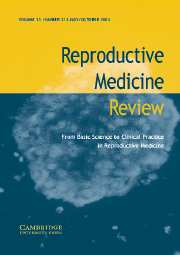No CrossRef data available.
Article contents
Cytogenetics of tumours of the female reproductive tract
Published online by Cambridge University Press: 02 March 2009
Extract
Tumours of the reproductive tract present with a great variety and diversity in males as well as in females. They originate from tissues which belong to different embryonic sheets or stem cells, and may appear at various ages, including younger age groups. Some are under hormonal control or influence, others may have a strong environmental component. It is becoming increasingly clear that in tumours, one or more molecular lesions at the DNA level are the causative factor. Their specificity may be very high and may also determine, in part, the phenotype and histology of the proliferation. Discovery of the genes involved was made possible by previous identification of chromosome changes typically occurring in certain tumours.
- Type
- Articles
- Information
- Copyright
- Copyright © Cambridge University Press 1994


